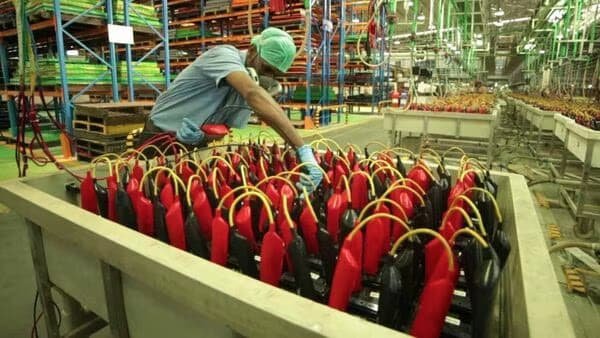“India’s Struggle for Fiscal Responsibility and Climate Accord”
In balancing economic support with fiscal responsibility, India should aims to align its efforts with climate commitments, reinforcing a sustainable path forward.
India’s Finance Minister to Present Interim Budget Amid Global Economic Uncertainty
On 1st February 2024, India’s finance minister, Nirmala Sitharaman, is all set to present the interim budget for the fiscal year 2024-25. This interim budget precedes the comprehensive budget expected post the Lok Sabha elections, and key focus will be on early fiscal-year expenditures and revenues. However, with the current global instability, the upcoming budget must address both risks and opportunities for India’s economy.
Risks in Global Geopolitics
One of the major risks that the budget needs to address is the ongoing turbulence in global geopolitics. Conflicts in Europe and the Middle East are showing no signs of resolution. The Israel-Gaza conflict, which began last October, is escalating, disrupting global shipping routes and calling for military protection in the Red Sea.
Opportunities in Indian Economy
Despite global uncertainties, the Indian economy shows promising momentum. The official output growth for the fiscal year 2023-24 is projected to be over 7%. Furthermore, the quarter ending September 2023 witnessed double-digit growth in the industrial sector, while the construction sector is experiencing renewed investment, largely due to government infrastructure spending and an uptick in residential real estate. Additionally, major industrial sectors such as energy, utilities, and metals have seen net profit growth despite falling commodity prices. Foreign investment flows also started rebounding from October onwards.
Policy Preferences and Economic Direction
The forthcoming budget holds the key to setting out policy preferences for the country’s economy. It is essential to recognize the risks posed by global instability and leverage the opportunities presented by the domestic economic momentum.
In conclusion, the interim budget for fiscal year 2024-25 marks a critical juncture for India’s economic policies. It is imperative to assess the global risks and seize the domestic opportunities to navigate the country’s economy through uncertain times.
What to Expect in the Budget: Financial Expert’s Perspective
As the government gears up to present its budget, the focus is anticipated to be on sustaining the momentum of the domestic economy. Internationally, countries are vying to establish themselves as ‘green super-powers’ through industrial policies aimed at clean energy, making it crucial for India to stay competitive in this race. The budget should play a pivotal role in enabling Indian companies to retain their competitive edge.
Key Expectations
1. Sustained Capital Expenditure
The government’s capital expenditure has been a significant contributor to India’s GDP growth in recent years, and it is expected to remain crucial in the upcoming fiscal years. The budget should prioritize continued investment in developing transport infrastructure, logistics, energy, and other key areas that bolster India’s competitiveness on the global stage.
2. Fiscal Prudence
A responsible approach to fiscal management is essential, with a focus on sustainable growth while avoiding overzealous welfare spending. Historically, the incumbent government has demonstrated fiscal prudence in electoral years, and similar measures are anticipated in the upcoming budget.
3. Sectoral Support
Sustained growth in the manufacturing and services sectors is vital for driving employment generation and ensuring economic stability. Initiatives such as the production-linked incentive (PLI) scheme have already proven beneficial for domestic manufacturing. It is imperative that the budget continues to provide support to these sectors, building upon existing foundations to drive faster growth and increased employment opportunities. Swift and efficient payouts under the PLI scheme will be critical in ensuring liquidity management for corporate beneficiaries.
Looking Ahead
As expectations for the upcoming budget take shape, the government’s emphasis on sustaining economic momentum, fiscal prudence, and sectoral support will be closely observed. The strategic allocation of resources and policies aimed at bolstering India’s competitive edge in the global arena will be pivotal for the country’s economic trajectory in the coming years.
Acceleration of India’s Clean Energy Target
India’s projected requirement to add 50GW of clean-energy capacity annually over the next seven years as part of its climate commitments presents a significant challenge. To facilitate this ambitious goal, the government’s strategic allocation of resources through existing initiatives, such as the National Green Hydrogen Mission, is crucial. The focus should also extend to revising taxes and duties on essential components like battery energy storage systems to ensure the cost-effective integration of renewable energy into the national power grid. Moreover, providing tax exemptions on locally sourced equipment and services for renewable energy plants, particularly those dedicated to green hydrogen production, is of paramount importance. It is imperative that the upcoming interim budget earmarks funding for the recently launched Pradhan Mantri Suryodaya Yojana, underscoring the government’s commitment to driving sustainable energy initiatives.
Adapting to Changing Global Trade Dynamics
In the wake of a global economic slowdown and evolving geopolitical trade dynamics, India’s export sector is confronted with new challenges and opportunities. While commendable progress has been made in the negotiations for a trade deal with the European Free Trade Area, which has been ongoing for a remarkable 16 years, it is imperative for the government to swiftly conclude more trade deals to capitalize on emerging opportunities.
Budgetary Considerations
The upcoming interim budget must not only address the pressing need to accelerate the transition to clean energy but also consider the broader economic landscape. It is essential to prioritize sustained capital expenditure, promote fiscal prudence, and extend critical support to sectors impacted by the pandemic. Moreover, the government should leverage initiatives like the production-linked incentive (PLI) scheme to bolster liquidity management and provide sector-specific assistance. Emphasizing the development of transport infrastructure, logistics, and energy will be instrumental in enhancing India’s global competitiveness while maintaining fiscal responsibility.
Conclusion
In conclusion, the interim budget represents a vital opportunity to bolster India’s sustainability efforts and economic resilience amid global challenges. By focusing on sustainable energy development, trade diplomacy, and prudent fiscal measures, the government can navigate the complexities of the current economic landscape and steer the nation towards long-term prosperity.











